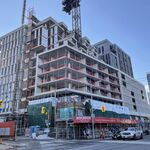Dan416
Senior Member
1. So we have limited money, but we should spend it on the Sheppard Subway because you hate leaving things unfinished?
2. Well obviously there's demand on Sheppard - there's demand on Steeles and on Lawrence and on Finch and on Keele and on pretty much every street in Toronto - the question is how much demand. If you can't understand that there is a difference between 3000 ppl/hr and 10000/hr... wow
4. 199 Finch Rocket to Finch Stn, Finch LRT to Spadina Line, Spadina Line to YorkU Stn
And if you can't understand how braindead amputating the Sheppard subway with an LRT attached to it is, then just....wow.




